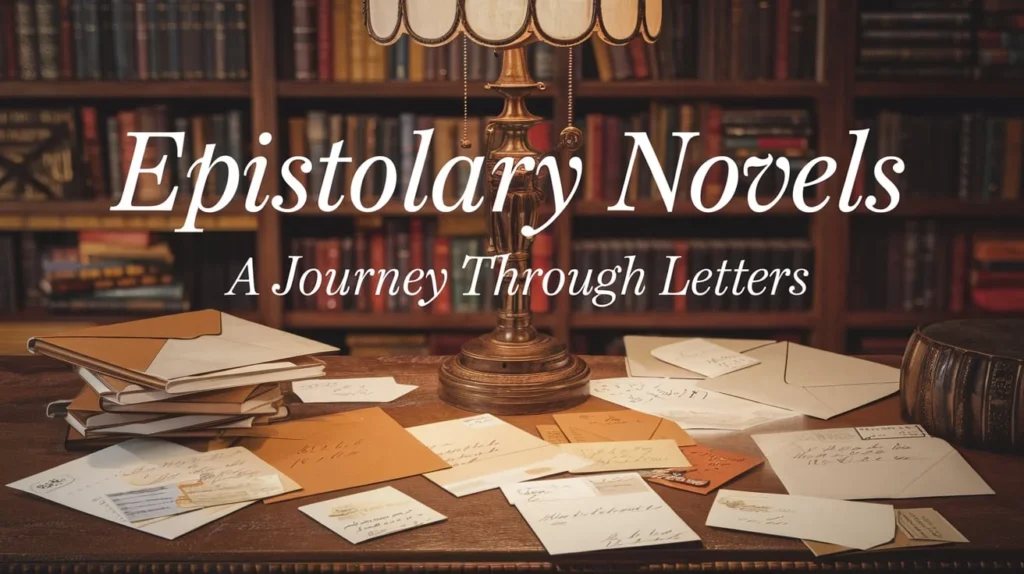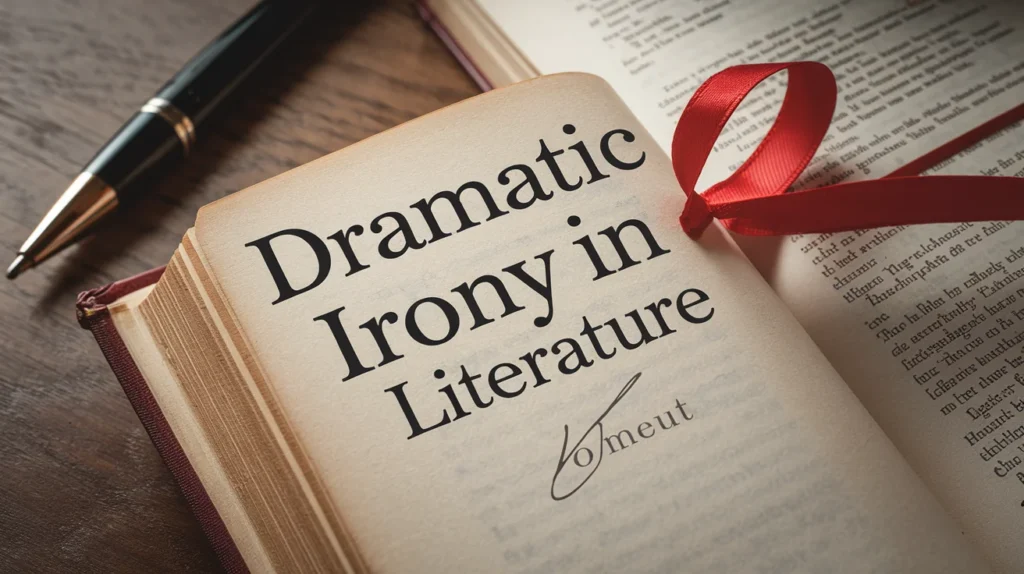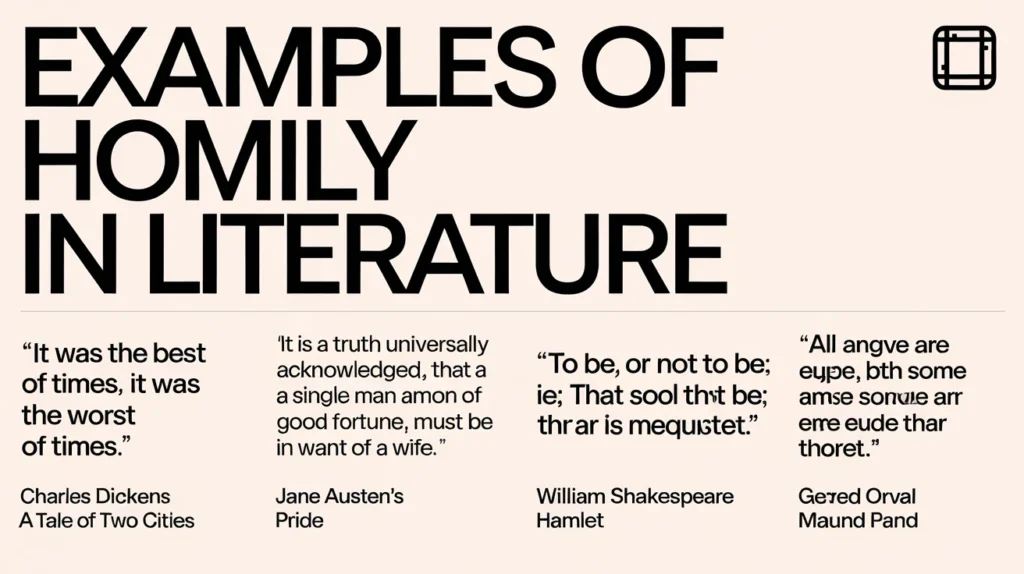Ever read a book that felt like peeking into someone’s private letters? That’s the magic of epistolary writing—a storytelling style that uses letters, diary entries, emails, or documents to pull you into the narrative. From Mary Shelley’s Frankenstein to modern hits like Where’d You Go, Bernadette, this format makes stories feel urgent, intimate, and real.
But why do authors choose this style? How does it deepen suspense, reveal hidden emotions, or trick readers? And which classic and contemporary books pull it off best?
In this guide, you’ll discover:
- What makes a novel epistolary (and why it’s not just old-fashioned letters).
- 6 iconic examples—from Dracula’s chilling journals to The Screwtape Letters’ demonic advice.
- How modern writers use texts, emails, and case files to reinvent the style.
- Related literary techniques like unreliable narrators and frame stories.
Whether you’re a literature lover, writer, or student, you’ll walk away with a fresh appreciation for this timeless technique. Let’s dive in!
What Is Epistolary Writing? Definition & Key Traits
An epistolary novel tells its story through documents instead of traditional narration. Think:
- Letters (Pamela, Dangerous Liaisons)
- Diary entries (Bridget Jones’s Diary)
- Emails, texts, or social media (Super Sad True Love Story)
- Mixed media (Dracula’s journals, news clippings, and telegrams)
Why This Format Stands Out
- Immediacy – Feels like reading someone’s private thoughts in real time.
- Multiple Perspectives – Different voices create unreliable or conflicting accounts.
- Suspense – Piecing together clues (e.g., World War Z’s interview format).
“Epistolary writing is the closest a reader gets to eavesdropping on real life.” — Literary critic James Wood
Case Study: Frankenstein’s Nested Letters
Mary Shelley frames Victor Frankenstein’s story within a sailor’s letters to his sister. This:
- Adds layers of doubt (is Victor reliable?).
- Makes the horror feel discovered, not told.
Why Authors Use Epistolary Form: 4 Key Functions
1. Creates Intimacy & Realism
- Example: Pamela (1740) mimics a maid’s real letters, making her struggles visceral.
2. Unreliable Narration
- The Screwtape Letters (C.S. Lewis) uses a demon’s advice to expose human flaws.
3. Builds Suspense
- Dracula mixes journals, ship logs, and telegrams to slowly reveal the vampire’s threat.
4. Modern Reinventions
| Book | Format | Why It Works |
| Where’d You Go, Bernadette | Emails, memos | Satirizes helicopter parenting |
| This Is How You Lose the Time War | Love letters | Sci-fi romance feels handwritten |
6 Iconic Epistolary Novels (Deep Dive)
1. Frankenstein by Mary Shelley
- Structure: Sailor’s letters → Victor’s confession → Monster’s plea.
- Effect: Makes the tragedy feel unavoidable and layered.
2. Pamela by Samuel Richardson
- Groundbreaking: First major English epistolary novel.
- Social Impact: Sparked debates about class and gender.
3. The Screwtape Letters by C.S. Lewis
- Twist: A demon mentors his nephew on corrupting humans.
- Cleverness: Uses reverse psychology to teach morality.
4. Dracula by Bram Stoker (1897)
Why it’s a masterpiece of epistolary horror:
- Mixed-media genius: Combines journals, letters, newspaper clippings, and even phonograph recordings.
- Slow-burn dread: Readers piece together the vampire’s movements like detectives.
- Real-world inspiration: Stoker based the epistolary style on real Victorian case files.
Key Table: How Dracula Builds Suspense Through Documents
| Document Type | Purpose | Example of Suspense |
| Jonathan Harker’s journal | Traps us in Castle Dracula | “The castle is a veritable prison…” |
| Mina’s letters | Show Dracula’s creeping influence | Her handwriting changes mysteriously |
| Dr. Seward’s phonograph | Records Renfield’s madness | “The blood is the life!” |
Modern parallel: The Blair Witch Project (1999) uses found footage similarly to create horror through “discovered” documents.
5. Dangerous Liaisons by Choderlos de Laclos (1782)
The epistolary novel as psychological warfare:
- Format: 175 letters between French aristocrats.
- Twist: The letters are weapons—full of lies, seduction, and revenge.
- Real-world impact: Banned for decades as “immoral,” yet inspired modern works like Cruel Intentions.
Bold insight: The Marquise de Merteuil’s Letter 81 is considered one of literature’s first feminist manifestos, disguised as a villain’s monologue.
“I acquired the virtues I was expected to show, but I made them serve my vices.”
— The Marquise de Merteuil, Dangerous Liaisons
Case Study: Power Dynamics in Letters
- Upper-class: Ornate, coded language (e.g., “your devoted servant” = bitter rival).
- Servants’ notes: Blunt and practical, exposing aristocratic facades.
6. World War Z by Max Brooks (2006)
How epistolary went apocalyptic:
- Modern twist: Uses oral history interviews instead of letters.
- Global scope: 40+ perspectives from soldiers, doctors, and ordinary survivors.
- Why it works: Feels like reading declassified government files.
NLP Keywords: “oral history narrative,” “documentary fiction,” “multi-voiced dystopia”
Real-World Connection: Brooks modeled it after real WWII interviews (Studs Terkel’s The Good War), making the zombie plague eerily plausible.
Epistolary Evolution Timeline
- 1740: Pamela (letters)
- 1897: Dracula (mixed media)
- 2006: World War Z (interviews)
- 2020s: AI logs (e.g., Sea of Tranquility’s time-travel emails)
Why These Examples Matter Today
- Dracula: Blueprint for multi-POV horror (see: The Last Days of Jack Sparks).
- Dangerous Liaisons: Proves letters can be as sharp as swords.
- World War Z: Shows epistolary adapts to new technologies (podcasts, texts).
Related Literary Techniques
Unreliable Narrator
- Epistolary’s natural fit (e.g., Pale Fire’s biased commentary).
Frame Story
- How The Tenant of Wildfell Hall uses a letter within a story.
FAQs About Epistolary Novels
1. What’s the difference between epistolary and diary novels?
- Epistolary = letters/documents sent to someone.
- Diary = private, unsent thoughts (though some books blend both).
2. Are there epistolary nonfiction books?
Yes! 84, Charing Cross Road (real letters between a writer and a bookseller).
3. Why do modern authors still use this format?
Texts and emails mimic how we communicate now (Attachments by Rainbow Rowell).
Key Takeaway
Epistolary writing isn’t just a relic of the past—it’s a living, evolving way to make stories feel raw and real. Whether through 18th-century letters or futuristic AI logs, this style keeps readers leaning in, questioning, and feeling.
Hungry for more? Pick up Dracula or This Is How You Lose the Time War and experience the magic yourself!


